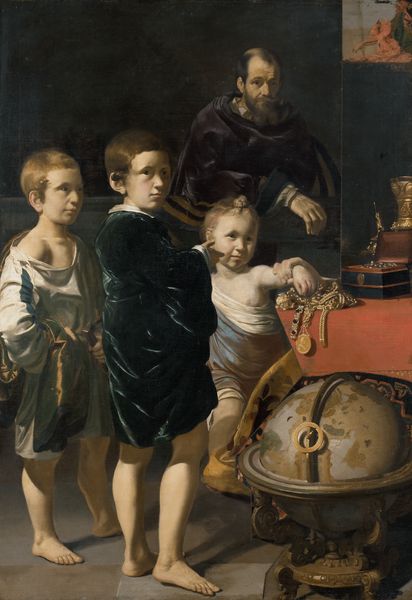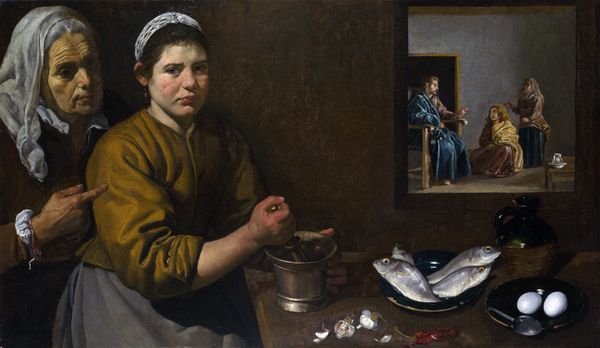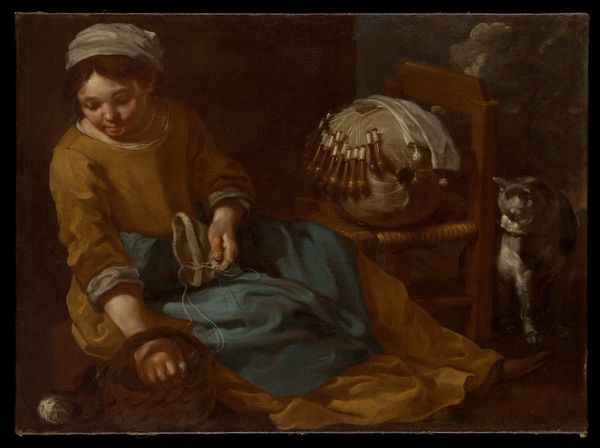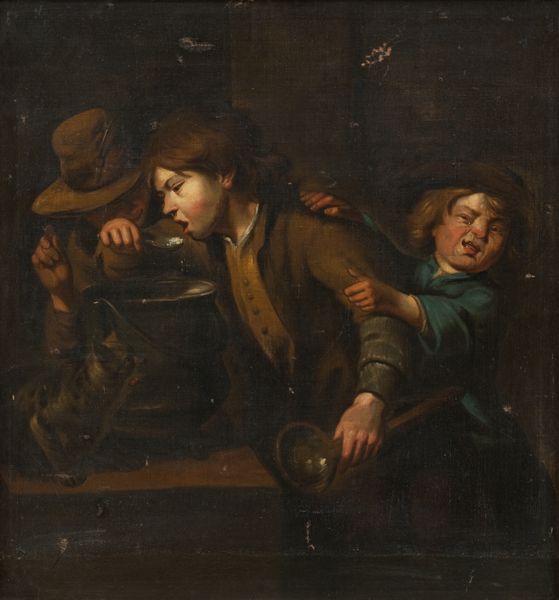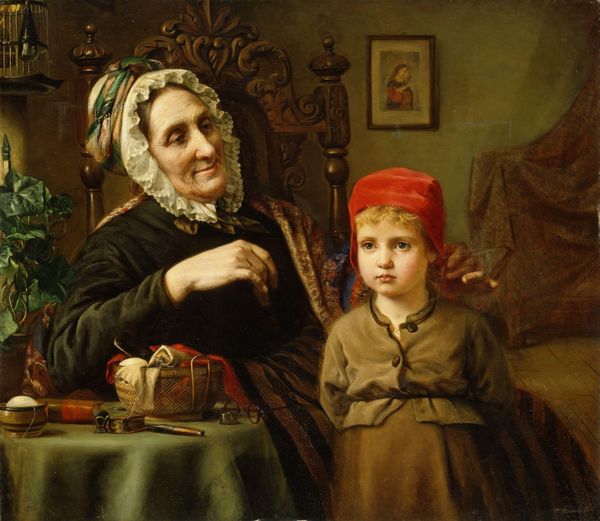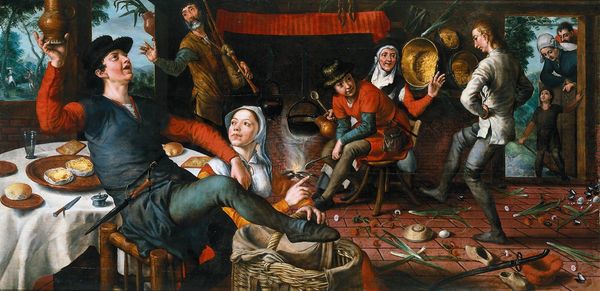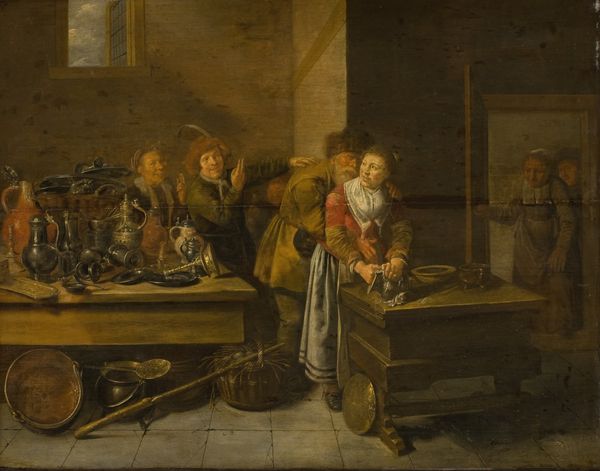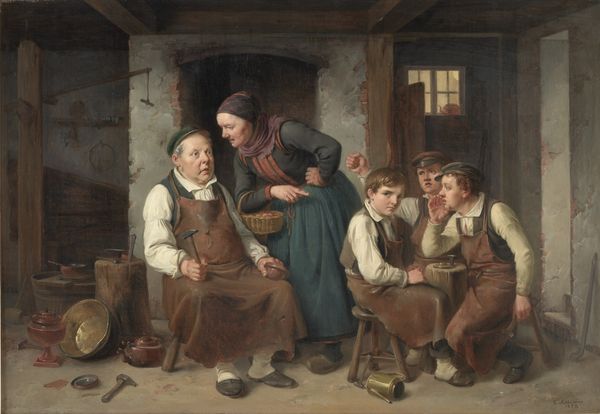
painting, oil-paint
#
dutch-golden-age
#
portrait
#
painting
#
oil-paint
#
group-portraits
#
genre-painting
Dimensions: 81 x 66 cm
Copyright: Public domain
Curator: Let’s explore "Zwei Kinder Bei Der Mahlzeit," attributed to Jan Miense Molenaer. The work presents two children engaged in a meal, rendered in oil paint, typical of the Dutch Golden Age. Editor: My immediate response is the incredible tension and duality: the warm hues and smooth surfaces contrast with the one child’s clear annoyance at sharing. It’s almost theatrical. Curator: I’m drawn to the formal construction. Notice how the light emphasizes the elder child's composed countenance as he’s scooping from a giant bowl and casts the younger one into shadow. Also the arrangement of the pot being on top of a surface helps frame the scene and provides the perfect line of view. Editor: Absolutely, but think about the societal implications! Dutch Golden Age paintings often masked societal critiques within domestic scenes. The shared meal—likely gruel, given its appearance—hints at resource constraints, particularly for orphaned children in 17th-century Netherlands. One kid probably always steals food, right? Curator: Intriguing thought. Looking at the composition itself, the spoon's diagonal directs our gaze from the bowl towards the children. I am captured by the smooth texture and perfect curvature of the container and the play of light across the child's faces. Editor: And doesn’t that spoon tell a story? It’s their tool—their resource. Sharing it isn’t just about food, but power dynamics. The seemingly simple portrait reflects a world of material difference, dependence, and childhood precarity. Curator: A very insightful interpretation, it does indeed raise some complex thoughts. Still, one cannot ignore the use of dark contrasting colors within the scene. Very interesting. Editor: I agree! It underscores the richness hidden in such so-called “simple” scenes. Thinking through material conditions enriches the formalism and unlocks the narrative complexity. It pushes beyond domestic bliss! Curator: Yes, there is indeed much more to see and consider here. Thanks for this enlightening conversation. Editor: Of course. This picture's value has broadened for me too. The dialogue we produce by viewing things through social lenses helps bridge a gap to new ideas.
Comments
No comments
Be the first to comment and join the conversation on the ultimate creative platform.
